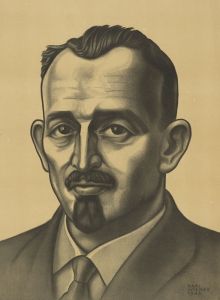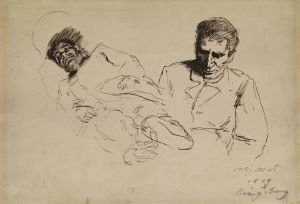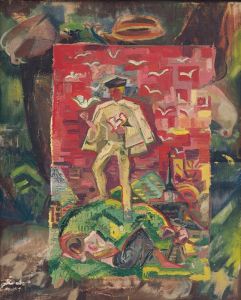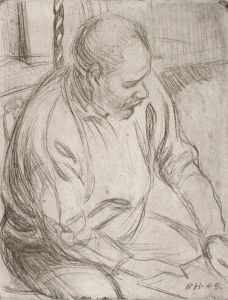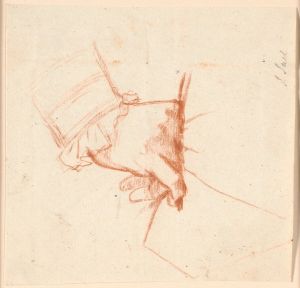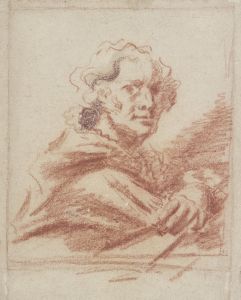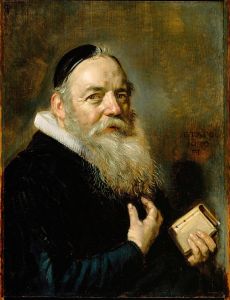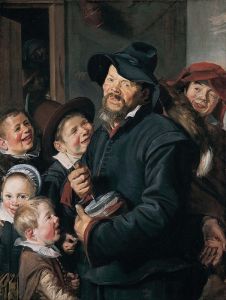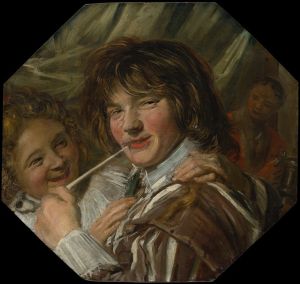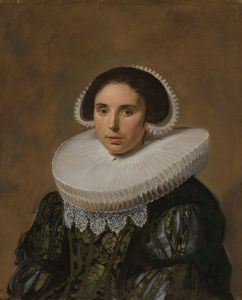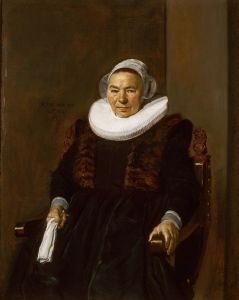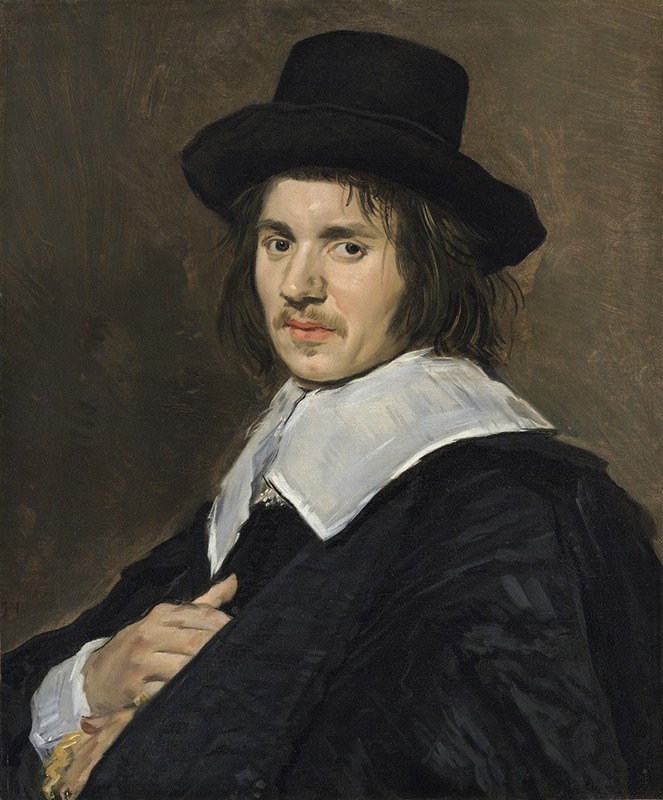
Portrait of a Man
A hand-painted replica of Frans Hals’s masterpiece Portrait of a Man, meticulously crafted by professional artists to capture the true essence of the original. Each piece is created with museum-quality canvas and rare mineral pigments, carefully painted by experienced artists with delicate brushstrokes and rich, layered colors to perfectly recreate the texture of the original artwork. Unlike machine-printed reproductions, this hand-painted version brings the painting to life, infused with the artist’s emotions and skill in every stroke. Whether for personal collection or home decoration, it instantly elevates the artistic atmosphere of any space.
"Portrait of a Man" is a painting by the renowned Dutch Golden Age artist Frans Hals. Known for his lively and dynamic portraiture, Hals was a master at capturing the character and essence of his subjects, and this painting is a testament to his skill.
Frans Hals was born in 1582 or 1583 in Antwerp, but his family moved to Haarlem in the Netherlands when he was still a child. He spent most of his life in Haarlem, where he became one of the leading portrait painters of the 17th century. Hals is particularly noted for his ability to convey a sense of immediacy and vitality in his works, often using loose brushwork and a keen eye for detail.
"Portrait of a Man" is believed to have been painted around 1630, a period when Hals was at the height of his artistic powers. The painting depicts an unidentified man, a common practice in portraiture of the time, where the identity of the sitter was often known only to the patron or the artist. The subject is portrayed with a direct gaze, engaging the viewer with a sense of presence and personality. This directness is a hallmark of Hals's style, which often broke away from the more formal and static portraits of his contemporaries.
The composition of "Portrait of a Man" is typical of Hals's work, characterized by a focus on the sitter's face and expression. The background is usually kept simple, ensuring that the viewer's attention remains on the subject. Hals's use of light and shadow adds depth to the portrait, highlighting the contours of the man's face and giving a sense of three-dimensionality.
Hals's technique involved the use of quick, fluid brushstrokes, which can be seen in the rendering of the man's hair and clothing. This approach not only captured the physical likeness of the sitter but also conveyed a sense of movement and life. The artist's ability to depict the subtleties of human expression is evident in the slight smile and the twinkle in the man's eyes, suggesting a lively and engaging personality.
"Portrait of a Man" is housed in the National Gallery in London, where it is part of a significant collection of Dutch paintings. The gallery's acquisition of this work has allowed it to be appreciated by a wide audience, contributing to the understanding and appreciation of Frans Hals's contribution to portraiture.
Hals's influence on portrait painting was profound, and his works continue to be studied and admired for their innovative approach and technical mastery. "Portrait of a Man" exemplifies the qualities that have made Hals one of the most celebrated portraitists of the Dutch Golden Age, showcasing his ability to capture the essence of his subjects with immediacy and vitality.





